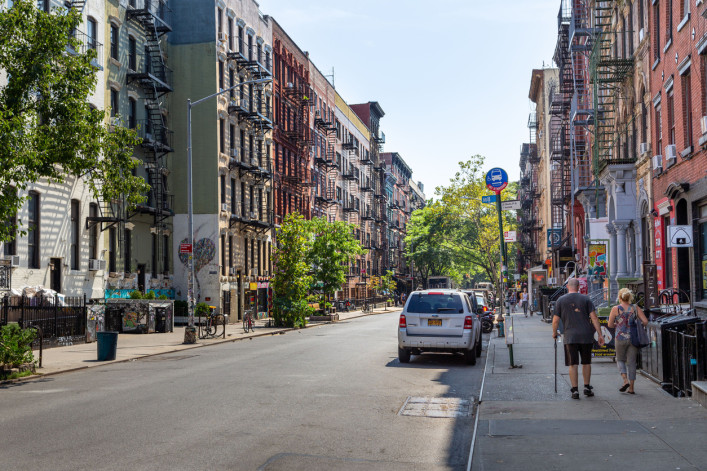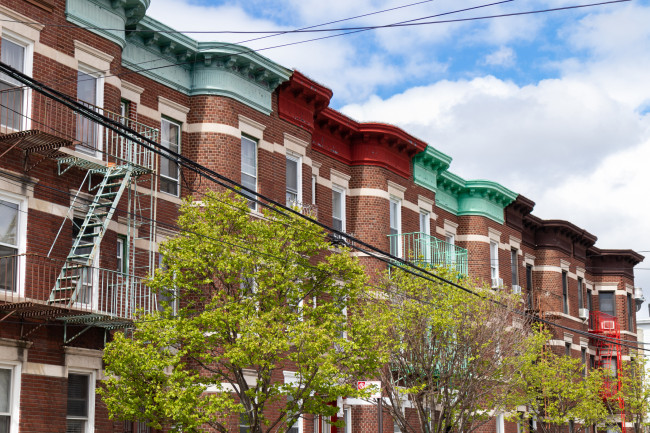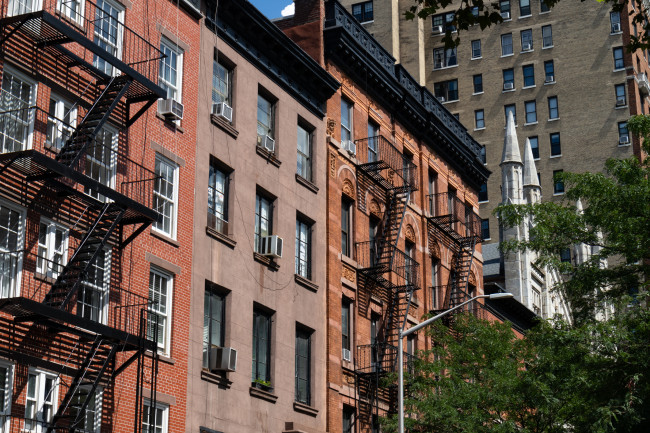Can you use a 1 percent down loan to buy in NYC?
- New programs from Rocket Mortgage and United Wholesale Mortgage allow 1 percent down payments
- The programs enable buyers who make under 80 percent of the AMI to get a conventional loan
- The lenders cover 2 percent of Fannie Mae or Freddie Mac's 3 percent down payment loans

Brick ran the numbers for a 1 percent down loan on a $475,000 condo.
iStock
As a buyer you may have heard about mortgages that allow three percent down payments, but have you heard about 1 percent down loans?
These are new home buyer loans from Rocket Mortgage and its competitor, United Wholesale Mortgage, which work with Fannie Mae’s HomeReady and Freddie Mac’s Home Possible loans for single-family properties. Those programs enable buyers who make under 80 percent of the area median income to get a conventional loan with just three percent down.
With the new 1 percent down loans, lenders Rocket Mortgage and United Wholesale Mortgage (which launched its Conventional 1% Down loan in April) cover two percent of the down payment for a HomeReady or Home Possible loan, and the buyer is responsible for the remaining 1 percent.
Adam Speck, executive vice president of purchase for Rocket Mortgage, estimates that more than 90 million U.S. buyers can meet the income requirements for Rocket Mortgage’s new ONE+ loan.
He points out that ONE+ covers the fee for private mortgage insurance, which is typically required if a buyer puts less than 20 percent down—a significant savings. (Depending on credit score and loan amount, PMI can cost a few hundred dollars a month.)
“When someone qualifies for this program and it gets them into a house, it can be life changing,” Speck says. Since its May launch, dozens of buyers have qualified, he says.
There are no penalties for prepayment, making additional payments, or paying off the loan early. Also generous is the program’s 50 percent debt-to-income ratio. (For comparison, lots of NYC co-op boards want to see a DTI in the range of 22-24 percent.)
Buyers can get approval before they embark on their hunt for home, which “helps offers stand out,” Speck says.
How would a 1 percent down loan work in NYC?
Rents are so high in NYC that lots of tenants pay rents that are the equivalent to a monthly mortgage payment—but are unable to make the leap to ownership. That’s because even renters who have salaries that can support high monthly payments can have trouble scraping together a down payment big enough to offset the cost of NYC’s pricey properties.
And that’s why putting 1 percent down seems ideal in theory for New Yorkers but it turns out to be difficult in practice. NYC’s pricey properties generally require incomes above 80 percent AMI, and borrowing 97 percent of the cost appears to set an unsustainable debt-to-income ratio.
To test this out, Brick asked mortgage broker Kevin Leibowitz, founder of Grayton Mortgage, to show us how a 1 percent down loan could work in NYC.
Leibowitz chose a listing that seems ideal for a first-time buyer: A one bedroom, one bath in Ditmas Park, Brooklyn, asking $475,000. For 2023, 80 percent of AMI in NYC for a two-person household is $90,400. For the sake of this experiment, let’s say our buyers are a couple who earn that exact amount.
The property is a condo and we’re assuming the building allows buyers to put 3 percent down (remember the lender is providing a grant of 2 percent of the purchase price). But that’s a big assumption because many condos require 10 percent down.
Note these 1 percent down loans could not be used to buy a NYC co-op, which are generally cheaper than condos, because most cooperatives require a much higher down payment, says Ryan Greer, senior vice president at National Cooperative Bank (a Brick Underground sponsor).
“It’s typical to see a co-op requiring a 20 percent down payment. The minimum down payment per lending guidelines is 5 percent, however, the co-op would have to allow that in its bylaws,” he says.
Putting 1 percent down and getting the other 2 percent covered by the lenders, the buyer in our hypothetical scenario would need to borrow the remainder ($460,750). Factoring in the cost of taxes, insurance, homeowners association fees and a mortgage rate of 7 percent, the buyers’ monthly payment would be $3,896.
Here’s where it gets tricky: A monthly payment of $3,896 gives these hypothetical buyers a debt-to-income ratio of 52 percent—that’s assuming the buyers have no other debts. As Leibowitz explains, if these buyers have, for example, a car payment and need help with the 2 percent closing costs—it’s going to put them even further on the wrong side of the debt-to-income ratio.
Bottom line
This is a great program in other parts of the country where you have less expensive housing, Leibowitz says.
“But to find a place in NYC that’s less than half a million and require buyers to have no debt eating into your debt-to-income ratio, for most New Yorkers that’s not real,” he says.
It’s possible you may find a distressed property in the outer boroughs where prices are low enough for a 1 percent down loan to pencil out—but you'll need to be the handy type since these types of properties require a lot of work to make them habitable.
You Might Also Like



























